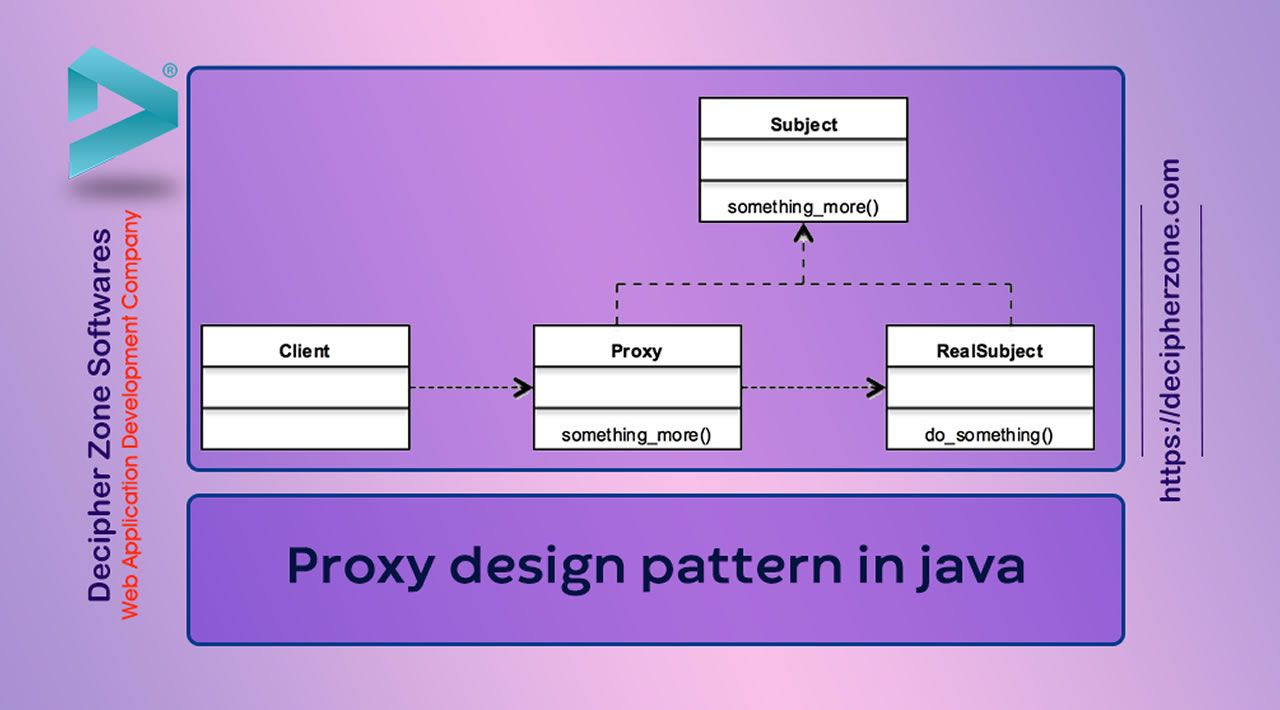What is the proxy design pattern in Java? The object oriented Proxy Design Pattern is a structural design pattern which is concerned with how classes and objects compose to form larger structures. The proxy design pattern in java takes a similar approach by providing a proxy object that acts as a placeholder for another object. Commonly a proxy is a class that functions as an interface to something else. The proxy design pattern can be best understood with the help of a real-world example. In computer networks, we usually come across the term proxy server. It is a server application that acts as an intermediary for web requests from the clients. The client, instead of connecting directly to a server, directs its request to the proxy server which performs the intended filtration and other network transaction. The purpose of proxy server is to simplify and control the complexity of the requests by providing additional benefits such as privacy and security. Proxies have been designed to add structure and encapsulation to distributed systems in computer networks.
The Proxy Design Pattern has the same intent has the proxy servers in computer networks. In this article we will define what is proxy design pattern, walk through the implementation and also see what are the benefits of using the proxy design pattern in java.
What is Proxy Design Pattern in Java?
What is the Proxy Design Pattern in Java? The Proxy Design Pattern provides a representative for another object in order to control the client’s access to it. The intent is to provide a placeholder for that object to control access to it. The literal meaning of proxy is “the authority” to represent someone else”. Now, that says a lot of things about the design pattern itself. As exemplified in the introductory paragraph, the proxy could interface to anything, it can be an interface to a network connection, an object in memory, a file or any other resource that is expensive to duplicate. The purpose of the proxy in the object oriented proxy design pattern is to act as a wrapper that is called by the client to get access to the intended object.
The proxy design pattern can be used in cases where the cost of creation and maintenance of an object is expensive for the application. It can be used to defer the full cost of its creation and initialization until we actually need it. An example for it could be an application that is slow to load, and our task is to make the loading faster. One way could be to avoid creating all the expensive objects at once when the document is opened. The only way to approach this would be to create expensive objects on demand. The proxy can be a great solution for this, it can act as a stand-in object for the real object the proxy would act just like the real image and would instantiate it when required.
Another example we can take is of the same application, we not only want our application to load faster but we need the resources inside of it to be fast as well. The proxy can be of great help here as well, we can provide extra functionality inside of it like caching when operations on real objects are resource intensive. The proxy design pattern examples in java have been used a lot to give you deep insights on this object oriented proxy design pattern. Now it is time to dive into a code example of proxy design pattern in java.
#java #design-pattern
